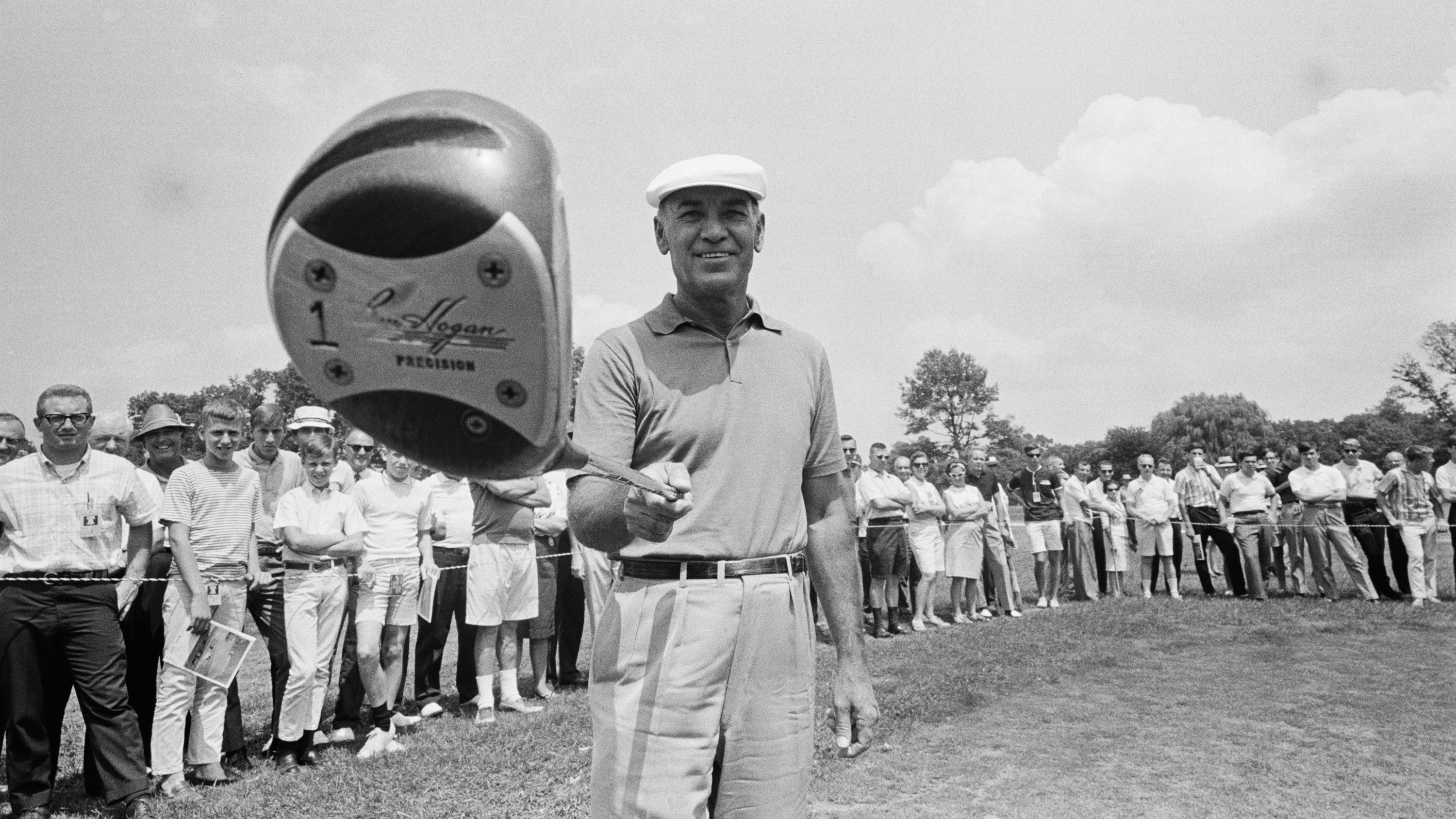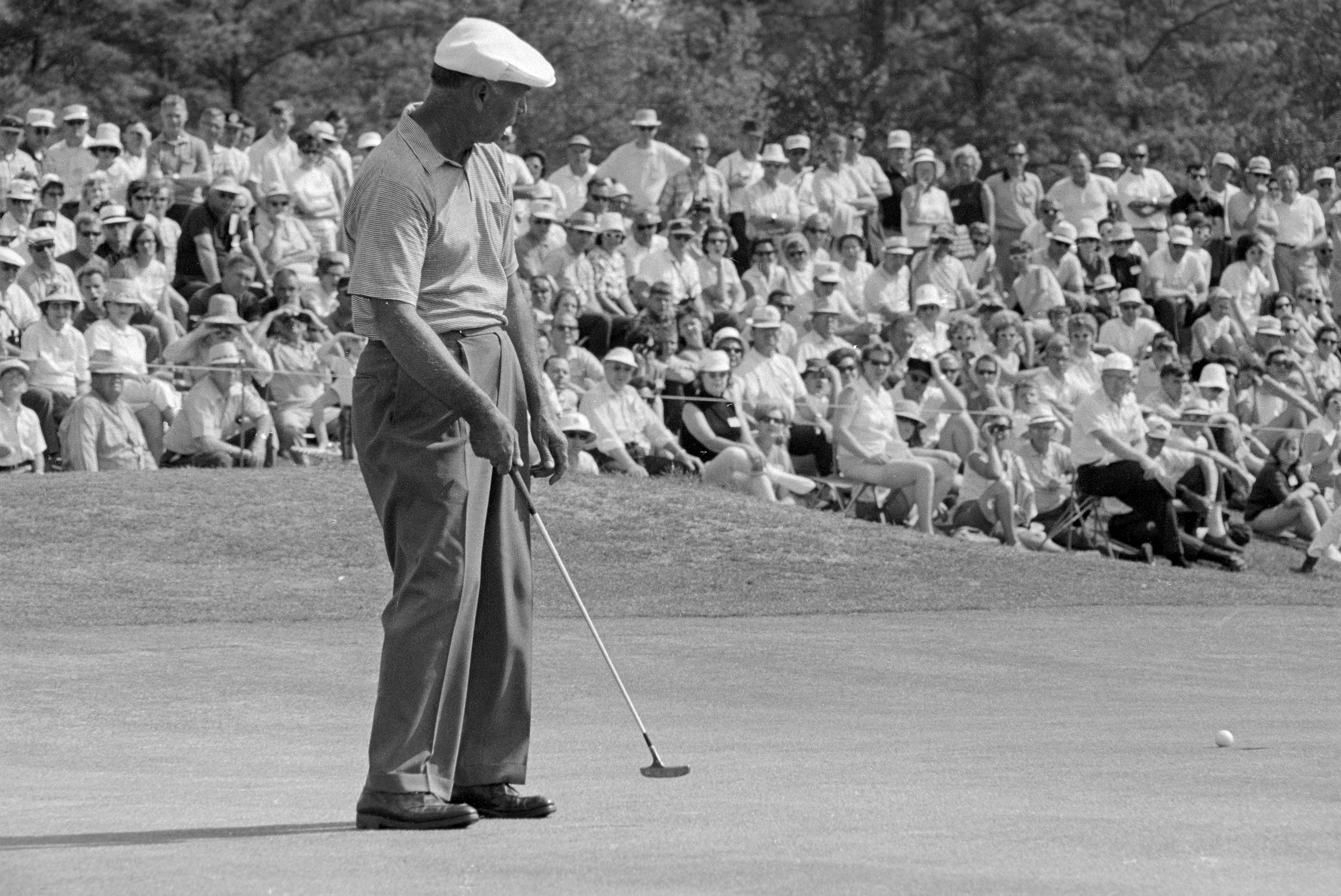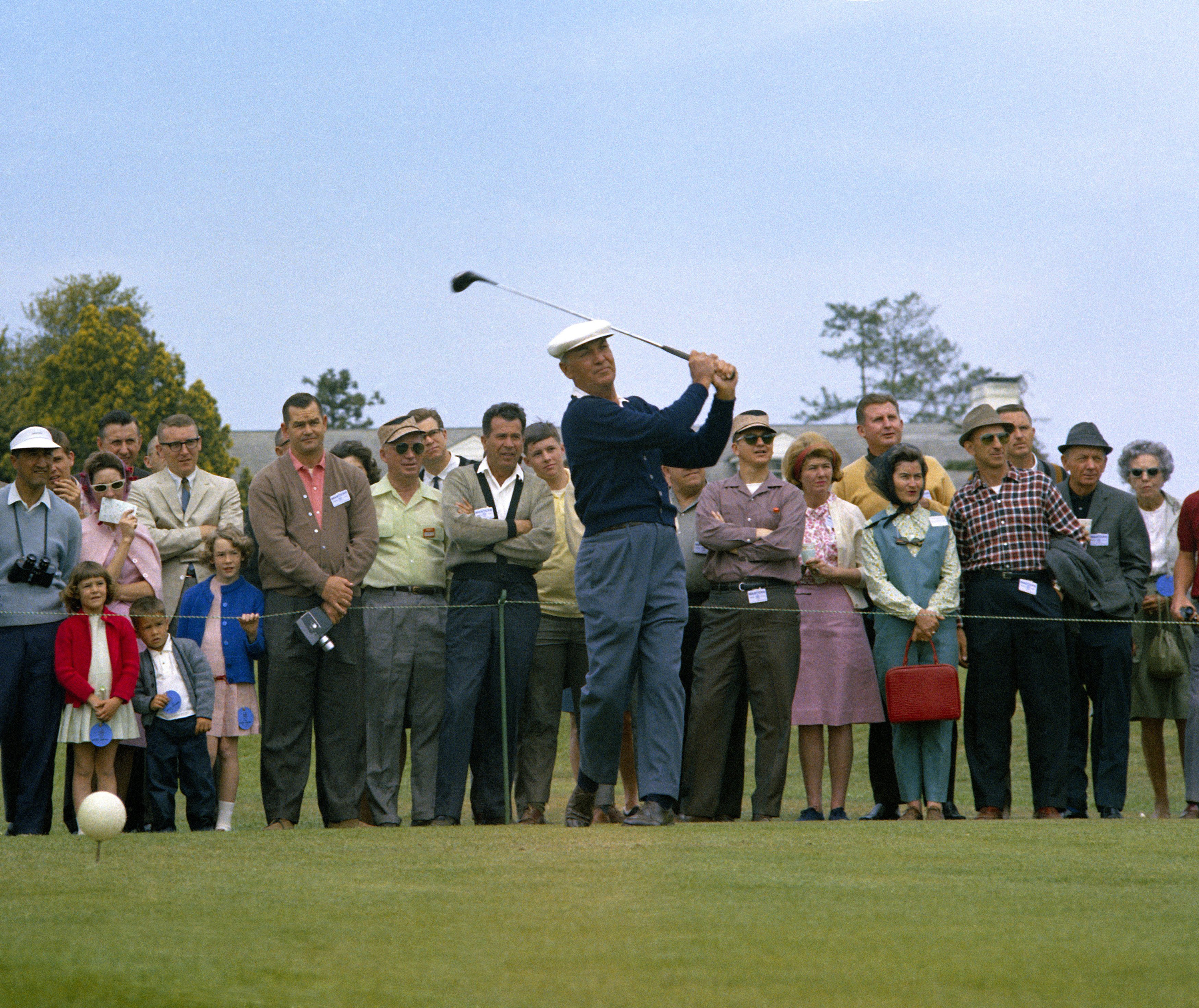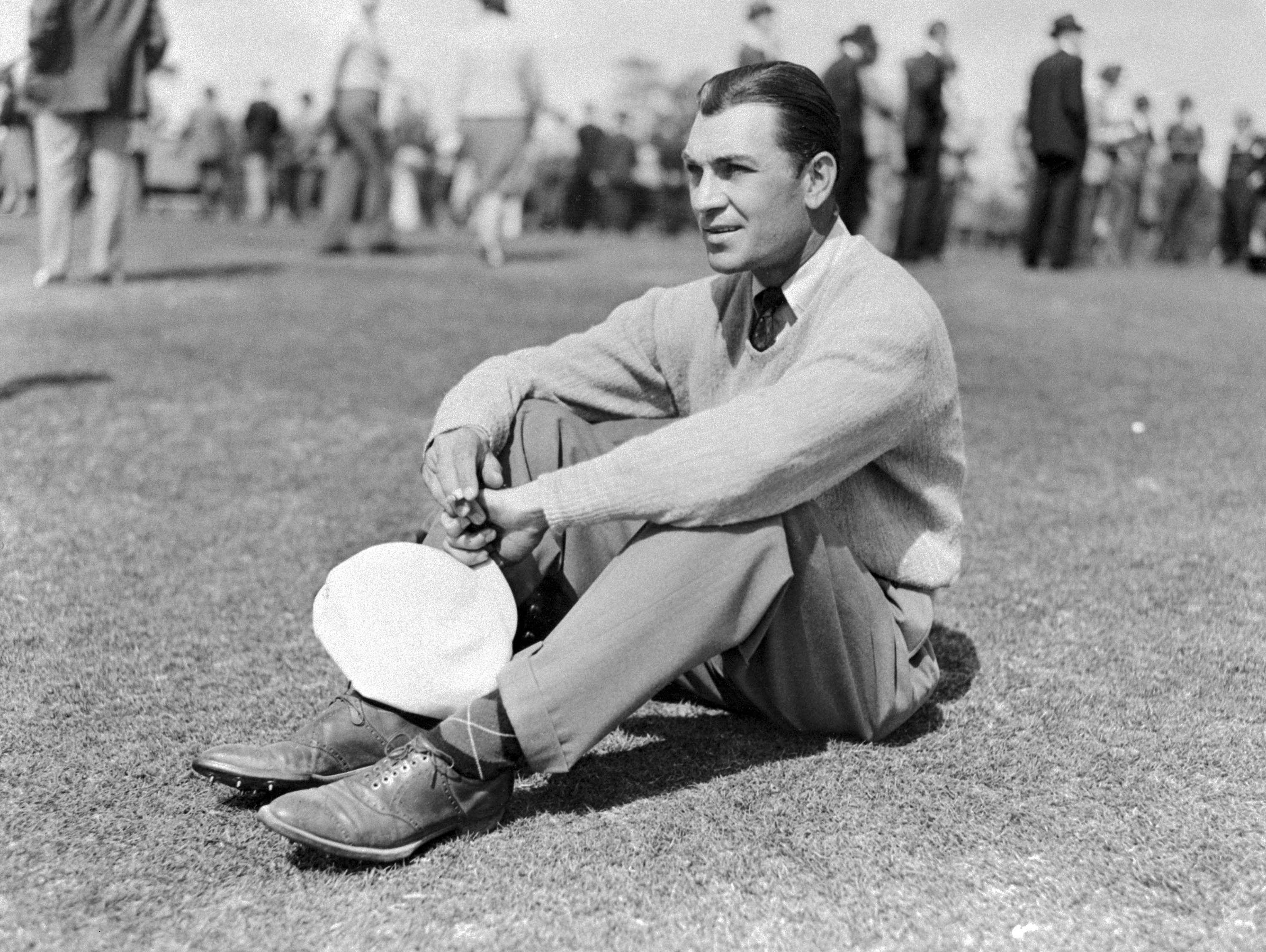Injury, The Yips And No Form... How Ben Hogan Almost Pulled Off The Unthinkable In His Last Masters Appearance
At Augusta National in 1967, 54-year-old Ben Hogan rolled back the years with an incredible back nine of 30 in the third round of his final Masters


Ben Hogan had not played a competitive round for 10 months prior to The Masters Tournament of 1967. He was 54, he was suffering a persistent shoulder injury, and his troublesome legs were aching. But on Saturday 8th April at Augusta National, “Bantam Ben” shot the lowest round of the tournament to give himself a realistic chance of the most unlikely victory. This is the story of how the sweet-swinging veteran equalled a Masters scoring record in his last ever Masters outing.
Hogan was a late developer as a professional. Unlike his contemporaries Sam Snead and Byron Nelson (all of whom were born in 1912), his early years in the paid ranks were tough and he didn’t get an individual win until 1940, some 10 years after turning pro. His nine Major titles all came in a relatively short spell between 1946 and 1953 with his two Masters victories were in 1951 and 1953.
In 1951 Hogan caught and passed Skee Riegel in the final round at Augusta. Riegel had been US Amateur Champion but his runner-up finish to “The Hawk” in 1951 was the highlight of his professional playing career.
1953 - A Stellar Year For the Hawk

Hogan at the 1953 Masters with Bobby Jones (centre) and Ed "Porky" Oliver (right)
In 1953, Hogan enjoyed a stellar year. Aged 40, he won three Majors and only logistics meant he couldn’t go for the Grand Slam. Later in the year he won the US Open and then The Open Championship at Carnoustie, in his only start in the event. That trip across the pond prohibited him from competing in the PGA Championship and the chance to make more history by claiming all four majors in a calendar year. That could have been possible because, in April, he had stormed to a second Masters title. He smashed the scoring record, finishing on 14-under-par, four clear of Ed “Porky” Oliver – a pro who was renowned for second place finishes in major championships, (although that was a slightly exaggerated reputation, as he had just three of them.)
Hogan’s competitive schedule by the late 1960s was limited to say the least. He hadn’t won on the PGA Tour since 1959 and, by the time of the ’67 Masters, he hadn’t played a tournament since the US Open at the Olympic Club the previous June, (an event in which he finished a creditable 12th.) In discussions with reporters early in Masters week, he reckoned he’d played just 15 rounds of golf in total that year.
It didn’t seem to have too much effect on his legendary tee to green game. Even into his mid 50s, he was able to strike a golf ball better than almost anyone in the field. “He hits the irons so good, he’s cheating,” said Gardner Dickinson after playing a practice round with The Hawk at Augusta.
Putting Troubles

Hogan struggled with his putting in the latter part of his playing career
A principal problem for Hogan was on the putting surfaces. By the latter part of his career, he often froze and was unable to take the putter away, sometimes standing for what seemed an age before making a stuttering pass at the ball.
Subscribe to the Golf Monthly newsletter to stay up to date with all the latest tour news, equipment news, reviews, head-to-heads and buyer’s guides from our team of experienced experts.
“I hear people say, ‘Why doesn’t he hit it faster?’ when I’m putting,” he told reporters at Augusta. “The answer to that is – I just can’t do it!”
Another issue for Hogan was his physical condition. He had struggled with injury ever since the near-fatal car crash he and wife Valerie had been involved in some 18 years previously. The way he defied medical wisdom to battle his injuries and win so prolifically after that 1949 smash is one of the great stories of physical determination in the history of sport.
Speaking prior to the 1967 Masters, Hogan said he had been given a total of 19 cortisone injections to try to lessen the swelling in his shoulder to allow him to play. By all accounts, modern doctors would not recommend such doses. But Hogan was prepared to do what it took to compete.
A Steady Start

Bert Yancey led after the first round
The first two rounds of the tournament saw Hogan play steadily. Rounds of 74 and then 73 put him on three-over-par, with Bert Yancey in the lead on four-under. Yancey suffered from bi-polar disorder and spent various spells institutionalised. But he was a fine golfer and won seven times on the PGA Tour. He also recorded four third place major finishes, including the 1967 Masters.
Defending champion Jack Nicklaus was having a rare poor year in 1967. He shot 79 in the second round at Augusta and missed the cut. It was one of only two Masters cuts Nicklaus missed between 1960 and 1993.
22-year-old Tony Jacklin, playing on his Masters debut, was tied for second with Julius Boros, Gay Brewer and Bobby Nichols. Jacklin would go on to finish in a tie for 16th.
It was the first time golf fans in the UK were able to watch live coverage of a golf tournament from the USA (on BBC2.) Golf Monthly considered it such a success that it was discussed in the “Talking Golf” section of the May issue that year – “The BBC may now consider it was a programme of such importance that it would be better to have made it available to a wider audience through BBC1.” Maybe the BBC might like to consider its importance again today.
The Third Round

Ben Hogan teeing off the 10th at Augusta
The third round began innocuously for Hogan. He reached the turn in level par with just one birdie and one bogey on his card. One key hole though was the 8th. He had suffered double bogeys on the long, uphill par-5 on days one and two having visited the trees and the bunker respectively, then missed 18-inch putts both days. Getting past that one safely set the fans’ favourite up for a rip-roaring back nine.
Those fans welcomed Hogan to every green on the run for home with a standing ovation. “The little champion from another era,” as the Associated Press called him, was spurred on to dredge up a spell of golf that was very much from that other era.
Hogan’s aforementioned struggles with the putter caused him to sometimes feel “embarrassed” to play in front of crowds. There was nothing embarrassing about his Saturday back nine. He fired a 7-iron into seven feet on the difficult 10th and rolled the putt home. On the treacherous 11th he played a bold approach, going against his trademark fade to draw a majestic 6-iron into the pin to leave a near tap-in for a three. He played a solid shot to the 12th and holed a fine putt for three birdies in a row. He was on a roll and clearly being carried on a wave of nostalgia because he went against his usual strategy on the par-5 13th. He generally favoured laying up and pitching and putting on the Augusta par-5s, but that Saturday he pulled out his 4-wood and smoothed his second shot onto the putting surface to set up a two-putt birdie. He had birdied four holes in a row around Amen Corner, equalling a record for consecutive birdies. He wasn’t done, after a par on the 14th, he went for the green in two on the 15th, trusting his 4-wood once more. He found the surface and missed an eagle by the narrowest of margins.
Standing Ovations for the Old Fan Favourite

Hogan was welcomed onto every green in 1967
Pars followed at the 16th and 17th holes with the patrons standing and applauding his every step. “It was wonderful and I’m very gratified, I wish I could thank them all for giving me a hand,” he said after the round.
But Hogan was always famously able to block out distractions. His playing partner that day, South Africa’s Harold Henning, later said that he had praised Hogan on almost every shot on the back nine but had received no response. Hogan was a picture of focus. In the 1947 Masters, Hogan was playing with Claude Harmon who scored a hole-in-one. Hogan said nothing, made a two of his own and, on walking off the green, turned to Harmon and said ‘You know Claude, I think that’s the first time I ever made two there. What did you get?’”
Heading up the 18th on Masters Saturday 1967 though, the galleries were huge and Hogan must have lost an ounce of concentration for his second shot. He had vowed never to leave himself a downhill putt on the 18th at Augusta, having done so in the final round of 1946 and three-putting to lose out to Herman Keiser. But perhaps adrenaline caused him to hit a little further this time, because he did just that. Would his putting let him down? Certainly not – he drained it to come back in 30. He equalled the record low nine-hole score at The Masters, making six birdies in his last nine holes. It was also a record 38th sub-par round by Hogan at Augusta. Ben still had it.
More importantly, Ben was right back in contention. He had climbed the board with a low-round of the week 66 to find himself just two back of Boros, Nichols and Yancey with 18 holes to play. Could he do the unthinkable and win a ninth major at the age of 54 having barely played in the lead-up to the event?
“I will play as hard as I can. But a lot of fellows would have to fall dead for me to win it,” was his honest appraisal on Saturday afternoon.
A Last Masters Round

Ben Hogan finishes his last ever Masters round
As it was, Hogan’s realistic assessment was the correct one. He had given all he had in that third round and he ran out of steam on Sunday.
He struggled from the gun and his putting woes came back to haunt him. He three-putted four times and closed with 77. It saw him fall back into a tie for 10th place that included his fellow 54-year-old Sam Snead. Despite the disappointment, Hogan remained professional and made his way to the press room. When asked to describe his round, his response was typically matter of fact, “Jeepers, creepers… It was awful,” he said.
In the end it was Gay Brewer who came out on top at Augusta in 1967. The 35-year-old from Kentucky with a unique, looping swing had lost in a playoff one year before. In 1967, he fired a superb closing 67 to finish one clear of his good friend Bobby Nichols, also from Kentucky. Brewer birdied three holes in a row from the 13th to hit the front and he held on to claim his only major title. Brewer was known as a cheerful character who was popular with his fellow pros. He competed at Augusta as recently as 2000 and died in 2007.
An Incredible Career

Ben Hogan is one of the all-time greats
1967 was Hogan’s last Masters appearance and his penultimate start in a major. He would play his last in the US Open at Baltusrol two months later. Hogan finished his major career with some incredible stats to his name. He had the longest streak of consecutive majors in which he finished in the top five, with 12 between 1940 and 1947. Also, he had the most consecutive top-10 major finishes, with 18 between 1948 and 1956. He won eight majors in just 11 starts between 1948 and 1953. The Hawk owns the longest streak of consecutive US Open finishes in the top-10 with 16 (1940–1960). Between 1939 and 1956, Hogan never finished outside the top-10 in The Masters (He only missed one event during that time – 1949 after his near career-ending car crash.) Aside from his two wins, he was runner-up four times. Hogan won 64 times on the PGA Tour between 1938 and 1959.
Hogan played the odd tournament over the next few years, but his body wouldn’t allow him to play competitive golf and ceremonial roles weren’t really his style. Although he would almost certainly have been invited to become an honorary starter for The Masters Tournament, it wasn’t for him. He didn’t travel often and, although he followed the professional game in his later years, he wasn’t often seen at a tournament. Hogan died in 1997 at the age of 84.
The Texan will be remembered for his incredible run of major wins in the late 1940s and early 1950s, interrupted by that terrible car wreck in 1949. He will also occupy a place in golf history as one of the greatest ever swingers of the club. His “Five Lessons” and his elusive “secret” will continue to fascinate experts on golfing technique. But Hogan should also be remembered for his last hurrah at Augusta in 1967. The true greats of the game seem to find a way to produce one extra thrill before they hang up their clubs and Hogan certainly did so. His back nine that Saturday was simply incredible. He truly did roll back the years, defied his physical ailments and his battles with the yips to deliver a stretch of holes that was as good as any he produced through his illustrious career. Like Nicklaus winning in 1986 or Tiger in 2019, it was one of those golden Masters moments from a Masters great, one that should be cherished by all golf lovers.
Five Great Performances by Over 50s in Majors

Nicklaus at Augusta in 1998
2021 – Phil Mickelson becomes oldest ever major champion by winning the PGA Championship at Kiawah Island, aged 50.
2009 – 59-year-old Tom Watson misses a putt to win, then loses a playoff for The Open Championship at Turnberry.
1974 – Sam Snead was 62 when he fired rounds of 69, 71, 71 and 68 in the PGA Championship at the Tanglewood Club to finish in third place.
2008 – 53-year-old Greg Norman leads after 54-holes at Royal Birkdale. Despite a disappointing final round, he finishes in a tie for third.
1998 – At the age of 58, Jack Nicklaus closes with a 68 in The Masters to climb into a tie for sixth place, just four back of the winner Mark O’Meara.

Fergus is Golf Monthly's resident expert on the history of the game and has written extensively on that subject. He has also worked with Golf Monthly to produce a podcast series. Called 18 Majors: The Golf History Show it offers new and in-depth perspectives on some of the most important moments in golf's long history. You can find all the details about it here.
He is a golf obsessive and 1-handicapper. Growing up in the North East of Scotland, golf runs through his veins and his passion for the sport was bolstered during his time at St Andrews university studying history. He went on to earn a post graduate diploma from the London School of Journalism. Fergus has worked for Golf Monthly since 2004 and has written two books on the game; "Great Golf Debates" together with Jezz Ellwood of Golf Monthly and the history section of "The Ultimate Golf Book" together with Neil Tappin , also of Golf Monthly.
Fergus once shanked a ball from just over Granny Clark's Wynd on the 18th of the Old Course that struck the St Andrews Golf Club and rebounded into the Valley of Sin, from where he saved par. Who says there's no golfing god?